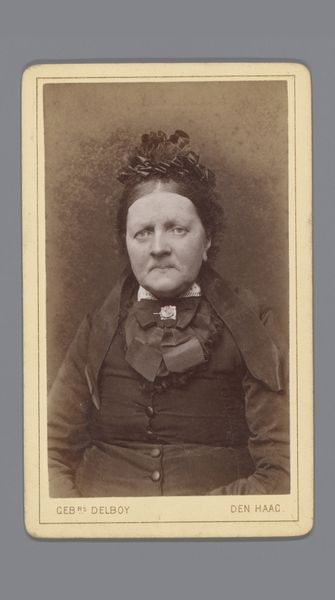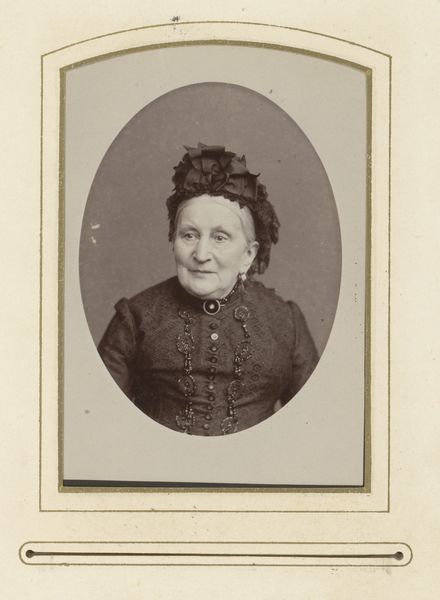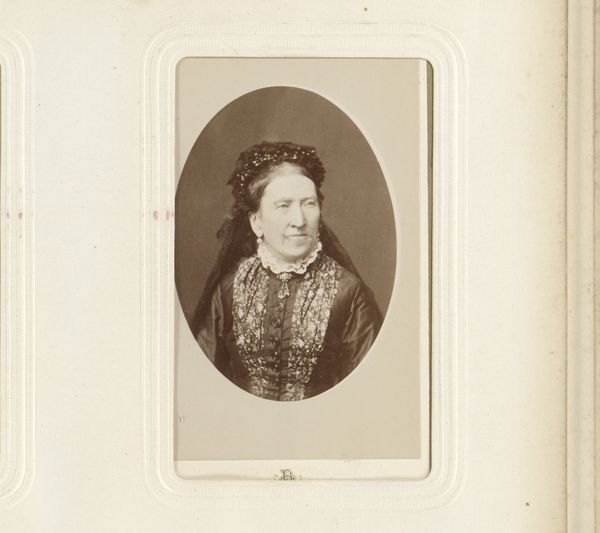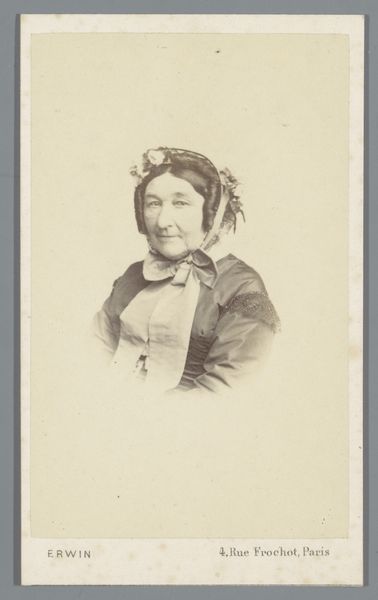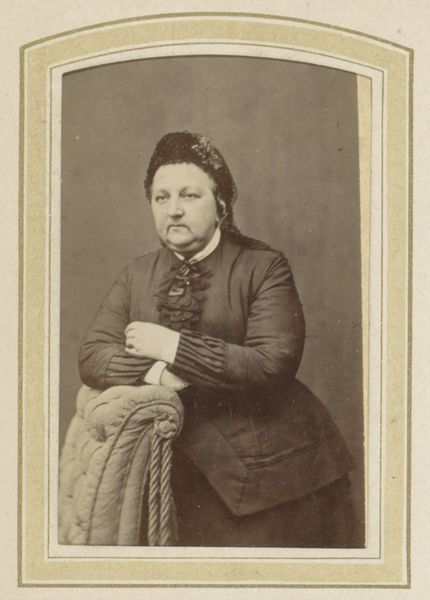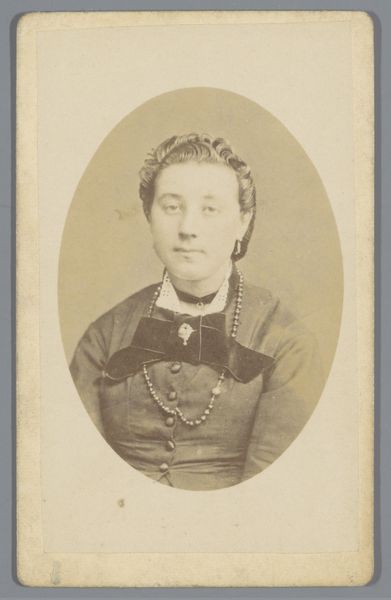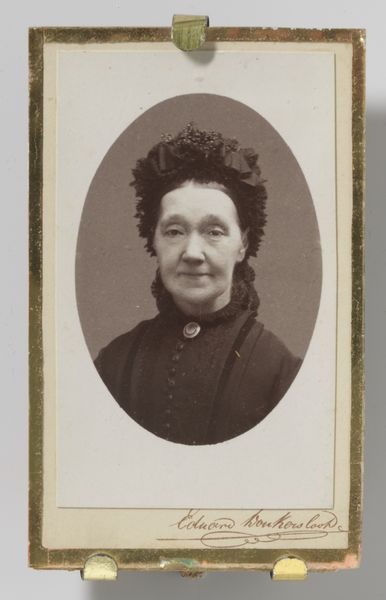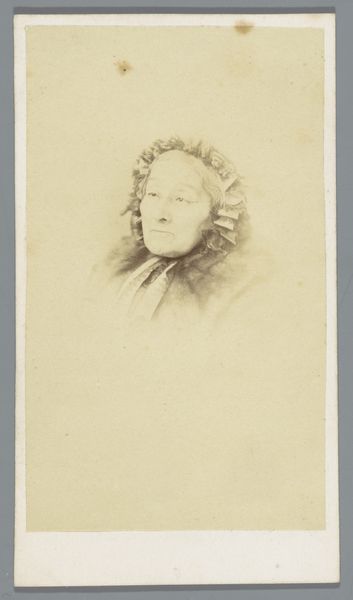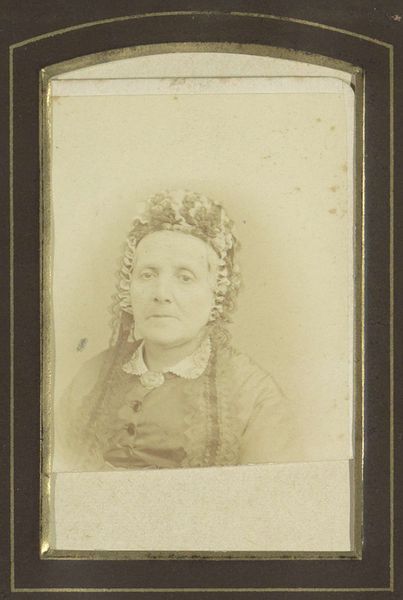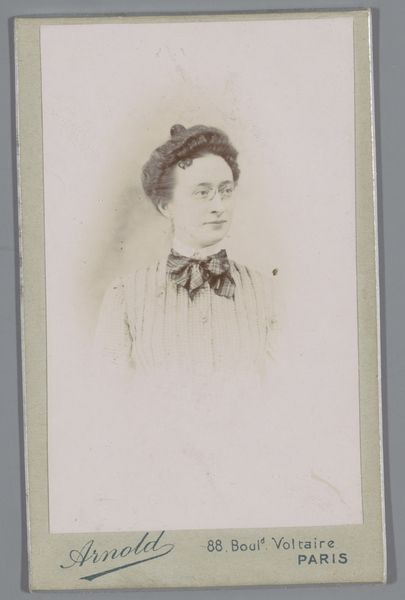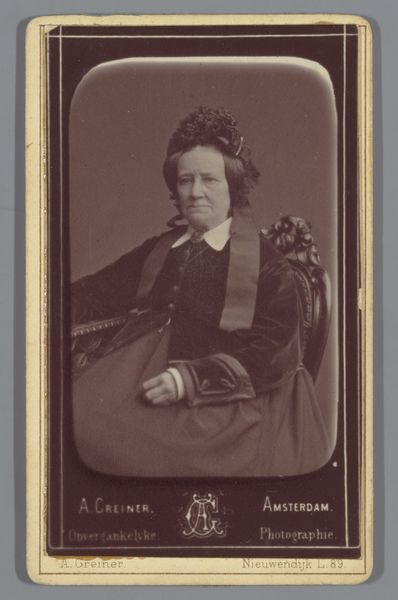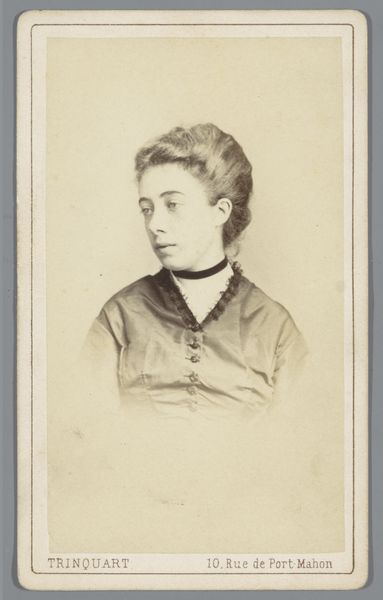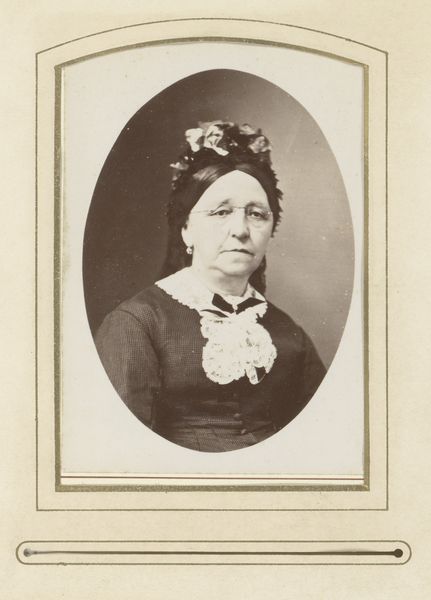
photography, gelatin-silver-print
#
portrait
#
aged paper
#
pale palette
#
reduced colour palette
#
pastel soft colours
#
light coloured
#
white palette
#
retro 'vintage design
#
feminine colour palette
#
photography
#
historical fashion
#
gelatin-silver-print
#
soft colour palette
#
realism
Dimensions: height 105 mm, width 62 mm
Copyright: Rijks Museum: Open Domain
Curator: This gelatin silver print, titled "Portret van een onbekende vrouw," attributed to Carl Wilhelm Bauer, and estimated from 1880 to 1908, possesses such a gentle quietude. The oval format adds to that feeling of contained serenity. Editor: Indeed. The pale palette and slightly aged paper gives it such an ethereal, almost dreamlike quality. You immediately sense a connection to a bygone era, a tangible link to the 19th century and its photographic processes. Curator: For me, it's interesting to consider how these gelatin silver prints were made, likely produced en masse in a studio setting. Each portrait was a commodity, providing relatively affordable portraiture at the time. Note also the minimal design on the card itself and how the focus on a specific person contrasts mass production. Editor: Absolutely, and let’s think about the semiotics of her attire. The dark, buttoned-up dress speaks of formality, and even perhaps a certain social standing. Her elaborate bonnet too seems indicative of a particular time and place. There’s a certain reserve evident here. What cultural scripts or ideals might her image reinforce? Curator: The photographic process itself has implications. How does it enable a specific image to perpetuate certain class ideals and notions of self and identity during that time period? How do technological advances in gelatin silver printing shape the possibilities for self-representation in comparison with hand painted portraiture or other materials? Editor: Right. Even the softness of the image can be interpreted symbolically. It could convey tenderness, but perhaps also subtly idealize or sanitize her image, reflecting an era with very particular aesthetic conventions. She is knowable yet remote, as if viewed through the hazy filter of memory itself. Curator: Precisely. Her clothes appear freshly cleaned, buttoned up in a rigid manner, thus demonstrating an elevated class standard of domestic labor at this moment in history. Even what’s visible and implied offers insights into that era's material and social structures. Editor: Yes, and through this woman's representation, whether she’s known to us or not, she represents both individual presence and collective cultural memory. Curator: It makes you consider the broader circumstances surrounding its creation and consumption, beyond just the person depicted. Editor: Ultimately, analyzing both symbol and structure enables us to grasp both the particular and universal nature of this timeless photograph.
Comments
No comments
Be the first to comment and join the conversation on the ultimate creative platform.
